Choosing the right camera for your travels can be overwhelming. Friends often ask for my advice on what camera to buy, and it’s a common question for anyone looking to capture their adventures. So, I decided to consolidate the essential features and recommend what I believe is truly the Best Compact Travel Camera in a single, updated post. This guide covers both the best mirrorless and the best compact options for travel in 2024.
Update: Originally written in 2018 and reviewed in 2024, my top recommendation, the Panasonic, remains the best travel camera today. The Canon compact camera pick has been updated to the latest model.
A great travel camera needs to be versatile enough for diverse shooting scenarios while remaining easy to carry. While travel styles vary, some core features are universally important. Considering these crucial aspects, what truly stands out as the best camera for travel?
If you’re eager for a quick recommendation, jump directly to my Top Travel Camera Pick for 2024.
Otherwise, continue reading to understand how to select the ideal travel camera for your specific needs.
This post contains affiliate links. As an Amazon Associate, I earn from qualifying purchases. The opinions expressed here are entirely my own.
Why Upgrade from Your Smartphone for Travel Photography?
When friends ask for camera recommendations and are currently using smartphones, my first question is always, “Why do you want to switch?”
This is crucial because if you’re accustomed to the convenience of a smartphone, there needs to be a compelling reason to carry a dedicated camera. Otherwise, a new camera might end up unused at home.
Smartphone cameras have made incredible strides in recent years, particularly in software-driven features that often surpass traditional cameras. Excellent in-camera HDR, seamless panoramas, GPS tagging, and effortless social media sharing are now standard.
Smartphone cameras leverage impressive software for outstanding results.
Here’s an example of a panorama taken with an iPhone. While I had my Canon 70D DSLR with me, the iPhone made capturing this panorama incredibly simple.
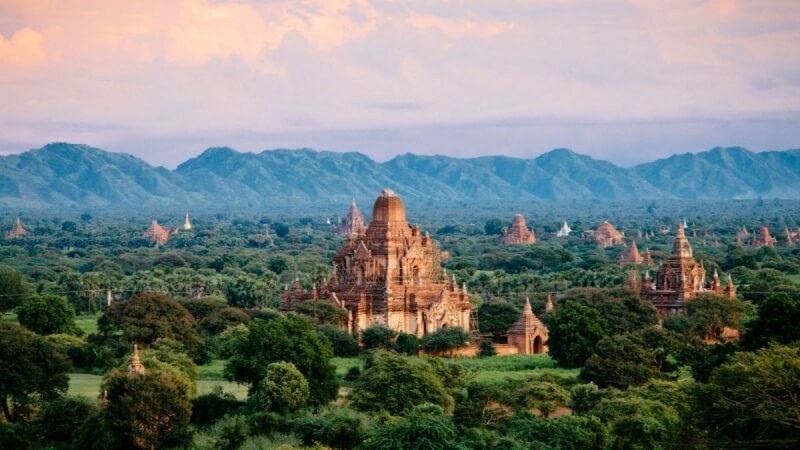 iPhone panorama example showcasing smartphone capabilities for travel photography
iPhone panorama example showcasing smartphone capabilities for travel photography
Exposure: 1/900s ƒ/2.2 @ ISO 100, Focal Length: 4.15mm, Camera: iPhone SE, Date & Time: April 10, 2017, 7:17 pm
The adage “the best camera is the one you have with you” is often true, and for many, that’s their smartphone.
However, if you’re searching for the best compact travel camera, you’ve likely already decided that you need more than a smartphone can offer.
Identifying Your Travel Photography Needs
My next question is usually, “What do you plan to photograph?”
For many, it’s capturing precious moments like a new baby, children’s sports games, or family gatherings. However, since this is a travel photography resource, I’ll focus on what makes a camera ideal for travel.
 Sunset in Bagan captured with a DSLR, highlighting scenarios where dedicated cameras excel in travel photography
Sunset in Bagan captured with a DSLR, highlighting scenarios where dedicated cameras excel in travel photography
Exposure: 1/15s ƒ/11 @ ISO 500, Focal Length: 109mm, Camera: Canon EOS 70D, Date & Time: September 29, 2016, 5:54 pm
What Defines a Great Travel Camera?
Certain features are crucial for almost any camera, but the importance of tradeoffs shifts when traveling. Portability and versatility become paramount.
While no single camera excels in every situation, the best compact travel camera should capably handle most photographic needs. It should capture stunning landscapes and offer zoom capabilities when required.
 Sunset in Bagan captured with a DSLR, highlighting scenarios where dedicated cameras excel in travel photography
Sunset in Bagan captured with a DSLR, highlighting scenarios where dedicated cameras excel in travel photography
Exposure: 1/100s ƒ/6.3 @ ISO 400, Focal Length: 135mm, Camera: Canon EOS DIGITAL REBEL XTi, Date & Time: September 29, 2015, 11:41 am
Beyond the type of photography, your user profile also matters. For a less tech-savvy user, I’d recommend a simpler camera than for someone comfortable with gadgets.
As an advanced amateur photographer who enjoys manual controls, RAW processing in Lightroom, and occasional professional work, my recommendations align with this perspective. Hopefully, you can adapt my suggestions to suit your own level and needs.
Key Features to Consider in a Travel Camera
Let’s explore the features that are most important in a travel camera and the tradeoffs associated with each. I will outline these features and then assess how my top pick performs against them. The best compact travel cameras should perform well across these criteria.
Sensor Size
Sensor size is a critical factor. Generally, a larger sensor equates to better image quality. The sensor is essentially the “film” of your digital camera, and size truly matters.
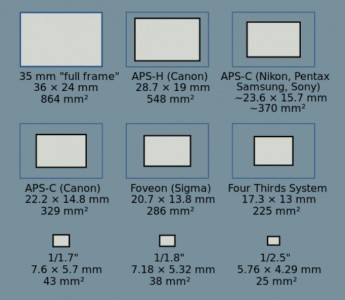 Sensor size comparison chart illustrating the differences between various camera sensor types for travel photography
Sensor size comparison chart illustrating the differences between various camera sensor types for travel photography
Sensor size comparison for a variety of camera types.
Tradeoff: Larger sensors typically lead to pricier cameras and larger, heavier lenses.
Full-frame sensors are common among professional photographers. APS-C sensors are found in many consumer DSLRs and larger mirrorless cameras. Micro Four Thirds sensors are smaller than APS-C but still offer excellent image quality. Point-and-shoot cameras generally have the smallest sensors. Modern smartphone sensors, while improving, remain smaller than even point-and-shoot sensors.
Lens Quality and Versatility
After the sensor, the lens is arguably the most crucial element affecting image quality. However, lens choice involves significant tradeoffs, especially regarding size and weight.
Lenses are pure physics, bending light to focus it onto the sensor. Larger sensors generally require larger lenses. Therefore, while larger sensors are advantageous, lens size and weight must also be considered.
Tradeoff: Lens size and weight are often inversely related to zoom range and lens speed (maximum aperture).
Traveling with a bulky lens setup can be cumbersome.
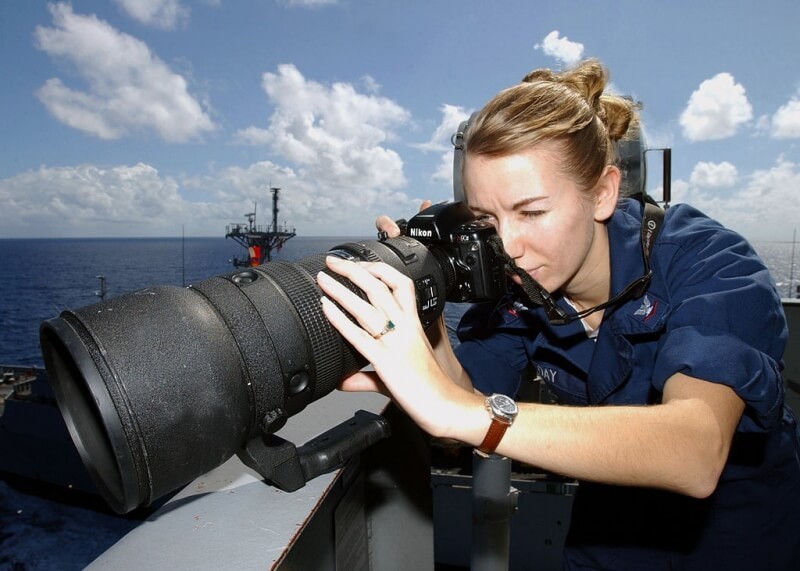 Image of a large telephoto lens on an aircraft carrier illustrating the impracticality of oversized lenses for travel
Image of a large telephoto lens on an aircraft carrier illustrating the impracticality of oversized lenses for travel
US Navy member Sabrina Day uses this giant 400mm fixed telephoto lens aboard an aircraft carrier.
Interchangeable Lenses
The ability to change lenses is a game-changer due to the lens-related tradeoffs. Interchangeable Lens Cameras (ILCs) allow you to select the optimal lens for each shooting situation.
Tradeoff: Carrying more lenses increases versatility but also adds weight and bulk.
ILCs or Interchangeable Lens Cameras empower you to choose the right lens for every photographic opportunity.
Image Stabilization (IS)
Tripods are often impractical when traveling. Effective Image Stabilization (IS) can enable capturing shots that would otherwise be impossible handheld, especially in low light. While IS doesn’t compensate for subject motion, it’s invaluable for sharp landscape and cityscape photos in challenging lighting.
Tradeoff: Better IS is typically found in newer, and often more expensive, cameras.
Here’s a handheld shot of the Boston skyline demonstrating the power of image stabilization for travel photography.
 Handheld Boston skyline panorama showcasing image stabilization in travel cameras
Handheld Boston skyline panorama showcasing image stabilization in travel cameras
Exposure: (Exposure data missing in original article), Focal Length: (Focal Length data missing in original article), Camera: (Camera data missing in original article), Date & Time: (Date & Time data missing in original article)
Size and Weight
For travel, size and weight are paramount. You need a camera that’s easy to pack and carry. A discreet setup also enhances security and street photography.
Many people buy DSLRs with good intentions but leave them at home due to their bulk and weight.
Tradeoff: Smaller size often means a smaller sensor and fewer features. Viewfinders, tilting screens, and even easily accessible settings might be sacrificed in ultra-compact designs.
Manual Settings
Manual settings provide creative control over your photos through aperture, shutter speed, and ISO adjustments.
Even if you begin with auto mode, you’ll likely want to explore aperture priority or full manual modes eventually. Your camera should offer these options.
Tradeoff: Cameras with physical dials for manual settings tend to be slightly larger. The smallest cameras might bury these settings in menus, making them less accessible.
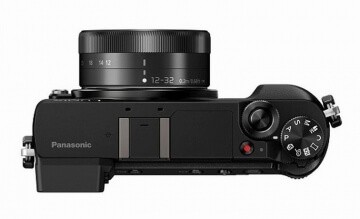 Panasonic GX85 showcasing manual control dials, essential for advanced travel photography
Panasonic GX85 showcasing manual control dials, essential for advanced travel photography
I appreciate cameras with full manual settings and the modes familiar from DSLRs.
Wireless Connectivity
On the go, quickly transferring photos to your phone for sharing is highly convenient. Wi-Fi or Bluetooth connectivity is a significant advantage for travel cameras.
Tradeoff: Newer, pricier cameras usually offer more robust wireless capabilities.
Cost
For most travelers, cost is a major consideration. Travel cameras are susceptible to loss, damage, or theft, making mid-range options often more practical than the most expensive models.
Tradeoff: Balancing budget with desired features is personal. Overspending might limit other travel experiences, while under-investing could compromise image quality or camera durability.
Bonus Features for Travel Cameras
These are desirable extras that can enhance your travel photography experience.
Video: Most cameras now offer video recording, some in 1080p and others in 4K. While 4K might not be essential for still photographers, video image stabilization is a significant benefit.
In-camera HDR and Panorama: These features are standard on smartphones but not always on dedicated cameras. Having them in-camera streamlines workflow, saving time on post-processing and maximizing shooting time.
In-camera features simplify processing, allowing more time behind the lens and less in front of a computer.
Weather and Water Resistance: A waterproof camera would be ideal for adventurous travelers. However, weather sealing often comes with tradeoffs in other areas. For surfers or divers, this feature is paramount.
Portability Enhancements: Simple features like USB charging using standard micro-USB cables are incredibly convenient for travelers, allowing charging from portable power banks or readily available hotel chargers.
The Best Camera For Travel in 2024: Panasonic Lumix GX85/GX80
My top recommendation for the best compact travel camera is the Panasonic Lumix GX85/GX80.
This mirrorless Micro Four Thirds camera with interchangeable lenses offers a stylish rangefinder design and an excellent feature set for travel photography.
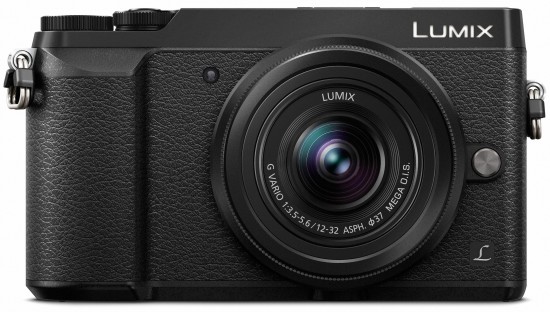 Panasonic Lumix GX85, recommended as the best travel camera in 2024
Panasonic Lumix GX85, recommended as the best travel camera in 2024
Buy the Panasonic Lumix GX85 Now
Let’s examine how the GX85 excels in the features discussed earlier and explore alternative options for specific needs.
Ideal Sensor Size for Travel
The Panasonic GX85 utilizes a Micro Four Thirds sensor. It’s not the largest, but it’s far from small – a perfect balance, like Goldilocks’ porridge.
For context, it’s roughly 13 times larger than an iPhone sensor and twice the size of high-end point-and-shoot sensors. This larger sensor area captures significantly more light, leading to superior image quality.
Why not choose an entry-level DSLR or APS-C mirrorless camera? As a former DSLR enthusiast, I understand the appeal.
But consider this sensor size comparison again:
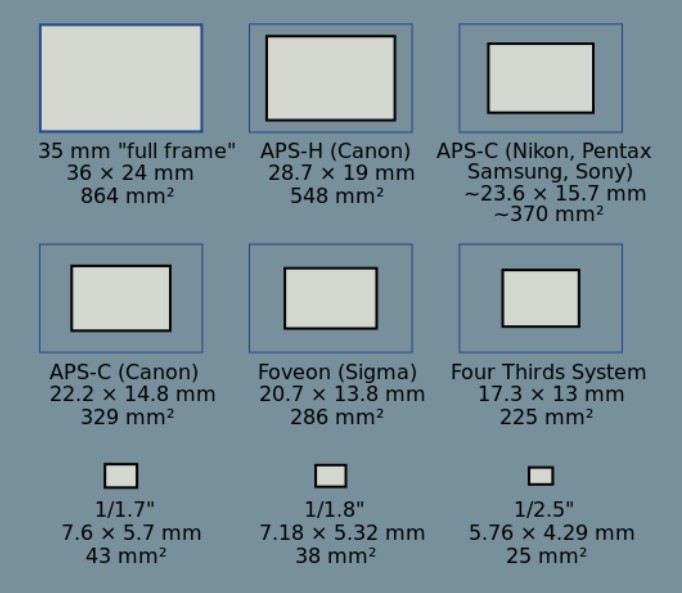 Sensor size comparison highlighting the balance of Micro Four Thirds for travel cameras
Sensor size comparison highlighting the balance of Micro Four Thirds for travel cameras
The seemingly small sensor size difference translates to a major advantage: Micro Four Thirds lenses are significantly smaller and lighter than DSLR or larger mirrorless lenses.
This leads us to the crucial lens feature.
Versatile Lens Options for Every Travel Scenario
If you’re selecting just one lens, you’ll want a versatile option covering most shooting situations.
A 24-70mm equivalent focal range is generally ideal. This range allows for landscapes, portraits, and capturing moderately distant subjects. Many kit lenses and fixed-lens compact cameras cover this range. For example, the Canon G7x Mark III offers a 24-100mm equivalent range.
Explore this Nikon lens simulator to visualize different focal lengths.
Interchangeable Lenses for Adaptability
However, for scenarios like wildlife photography on safari, where you need to photograph distant subjects like lions safely, a standard zoom lens won’t suffice. This is where interchangeable lenses become essential.
Think of it like choosing shoes for travel. Would you pack only one pair for cobblestone streets in Europe, sandy Caribbean beaches, and rainy days? Probably not. Similarly, ILCs let you choose lenses tailored to different travel environments and photographic needs.
For everyday exploration, a small, lightweight walkaround lens is perfect.
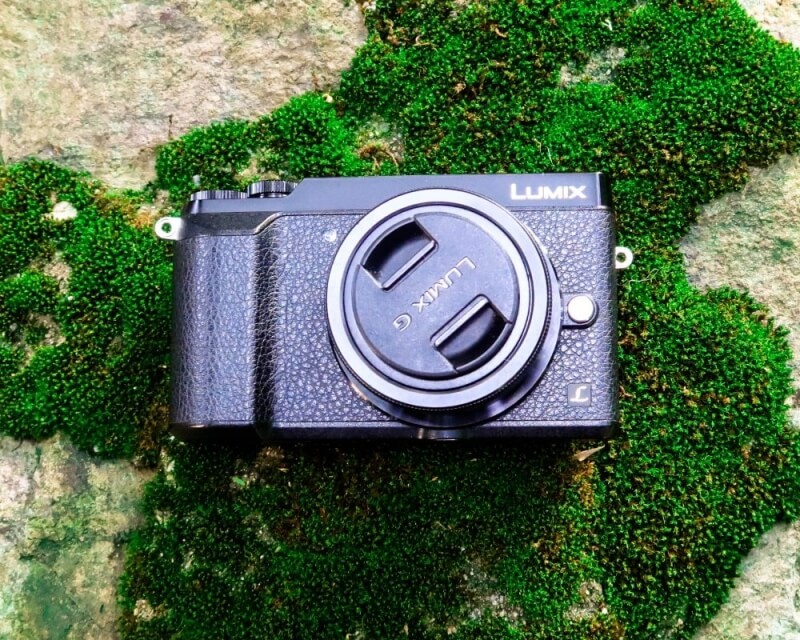 Panasonic GX85 with a compact lens, ideal for everyday carry during travel
Panasonic GX85 with a compact lens, ideal for everyday carry during travel
For low-light conditions, a fast prime lens excels.
For dedicated photography days, a longer zoom lens provides extended reach.
This versatility is a key advantage. The Micro Four Thirds (MFT or M43) system is the smallest interchangeable lens system, resulting in smaller, lighter setups compared to equivalent DSLR or larger mirrorless systems.
Micro Four Thirds (MFT or M43) is the most compact interchangeable lens system available.
Another benefit of MFT is lens compatibility. Olympus and Panasonic jointly developed the MFT standard, meaning lenses from both brands are compatible, along with lenses from Sigma, Tamron, and others – offering a vast ecosystem of over 80 lenses!
If this seems overwhelming, don’t worry. I have a curated list of the best lenses for travel photography.
READ MORE: Feeling overwhelmed by lens choices? Explore my shortlist of excellent micro four thirds lenses for travel photography.
Best Compact Travel Camera (Point-and-Shoot Option)
If you know you’ll never want to buy additional lenses, a compact travel camera is a great option.
My top compact pick is the Canon G7x Mark III, a fantastic camera at a competitive price.
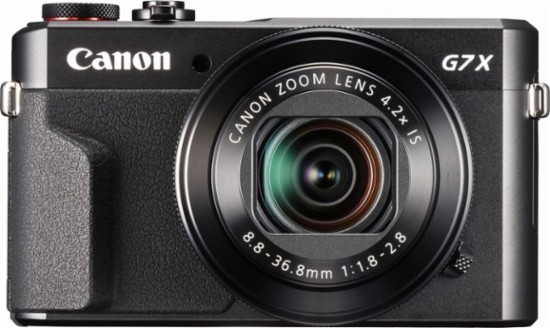 Canon G7x Mark III, recommended as the best compact travel camera for point-and-shoot simplicity
Canon G7x Mark III, recommended as the best compact travel camera for point-and-shoot simplicity
Buy the Canon G7x Mark III now
For a compact camera, the G7x Mark III has a large 1-inch sensor – practically the largest sensor size available in a compact.
Bag Recommendation: Consider a DIY Camera Bag solution for ultimate portability and discretion.
The lens boasts a 24-100mm range and a fast aperture of f/1.8 at the wide end and f/2.8 at the telephoto end. This makes it excellent for low-light shots and achieving shallow depth of field for professional-looking images.
Wired Magazine hailed the G7x Mark II (predecessor to Mark III) as “likely to be the best pocket camera Canon has ever produced.”
The G7x Mark III features a 180-degree tilting screen, perfect for vlogging and selfies. It charges in-camera via USB, eliminating worries about losing a dedicated charger, although an external charger is also included.
It’s simply a great affordable compact travel camera with exceptional image quality, albeit with a fixed lens.
Portability for Travel
As mentioned, the MFT system inherently results in smaller setups. Within the MFT range, the Panasonic GX85 is particularly compact.
When I purchased the GX85, intending it to replace my Canon 70D, I was surprised by its size – it’s small enough to replace a point-and-shoot!
It includes an electronic viewfinder (EVF), helpful for composing shots in bright sunlight, though slightly less convenient with glasses. The articulating screen, while not 180 degrees, is useful for high and low-angle shots, encouraging more creative perspectives.
Ever found a perfect shot in a bustling market but hesitated to raise a large camera? Smaller cameras are less obtrusive. They also take up less precious carry-on space – crucial since camera gear should never be checked baggage.
Smaller cameras are more discreet, often overlooked in places with “No Professional Cameras” signs.
Another traveler-friendly feature of the GX85 is USB in-camera charging via a standard micro-USB cable. This means you can use any USB charger or portable power bank for on-the-go charging, eliminating the need for a proprietary charger.
Image Stabilization Prowess
Image stabilization is a feature you might not realize you need until you experience it.
The GX85, when paired with stabilized lenses, offers impressive 5-axis sensor stabilization, providing up to 4 stops of shake reduction.
Here’s a handheld panorama I captured, demonstrating the effectiveness of IS.
Exposure: (Exposure data missing in original article), Focal Length: (Focal Length data missing in original article), Camera: (Camera data missing in original article), Date & Time: (Date & Time data missing in original article)
While not precisely measurable, IS allows handheld shots that were impossible with my older Canon 700D. Image stabilization technology has advanced dramatically in recent years. Photographers are even capturing handheld shots of the Milky Way!
Full Manual Control
Access to manual modes (aperture priority, shutter priority, manual) is essential for creative control.
In challenging lighting, adjusting shutter speed, aperture, or ISO is crucial to capture the desired image. Limited control is a major drawback of smartphones for serious photography.
The GX85 offers DSLR-level manual control with readily accessible dials for quick adjustments. User experience is paramount in compact cameras to avoid frustration.
This manual control is a primary reason why smartphones haven’t fully replaced dedicated cameras for me. While some smartphone apps offer manual settings, they are often less intuitive to use. However, if you primarily use auto mode and don’t plan to explore lenses, a smartphone might suffice.
On-the-Road Sharing
If you share photos online, wireless connectivity is valuable. While I prefer processing photos in Lightroom before sharing, on longer trips, on-the-go posting can be convenient.
The Wi-Fi on the Panasonic GX85 is functional, if sometimes a bit finicky, like many cameras. You can transfer single or multiple photos, RAW or JPEG, and even GPS tag images if you enable the GPS logger beforehand.
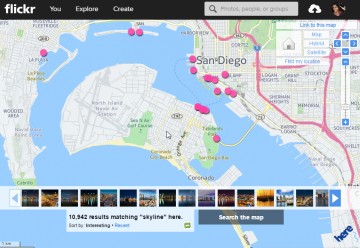 Flickr map showing geotagged photos in San Diego, highlighting the appeal of GPS tagging for travel photography
Flickr map showing geotagged photos in San Diego, highlighting the appeal of GPS tagging for travel photography
I wish cameras offered seamless GPS tagging like smartphones. Seeing photos on a map is fantastic!
However, GPS is power-intensive and can struggle to get a fix when starting in a new location. Until camera manufacturers improve GPS integration, manual GPS logging via smartphone apps remains the common workaround.
Nonetheless, the ability to quickly transfer and share photos while traveling is a definite plus.
Areas for Improvement
To provide a balanced perspective, here are some drawbacks of the GX85.
The GX85’s extensive features can be slightly confusing. Enabling certain features sometimes disables others. For example, HDR mode might be incompatible with burst mode or RAW-only capture. While logically sound, this can be inconvenient in the field.
The touchscreen is overly sensitive. Accidental touchscreen activation is a common issue. I’ve disabled most touchscreen features as a result. Even brushing the LCD with your nose while using the EVF can inadvertently change the focus point. Touchscreen design could be refined for more intentional use.
Battery life is also a limitation. I often find myself needing to swap batteries. Carrying spare batteries is highly recommended.
Cost-Effectiveness
The price point of the GX85 is surprisingly affordable for its class. For around $700, I acquired the body and two lenses – a 12-32mm pancake lens and a 45-150mm zoom. Deals may vary, but it offers excellent value.
Wired Magazine aptly called this camera, “The Best Camera For The Money.”
Historically, camera search tools (like the now-defunct DPReview tool) highlighted the GX85 as an exceptional value in its price range, with only the older, larger, DSLR-style Olympus OM-D E-M10 appearing in a similar price bracket with comparable features.
The GX85 provides incredible bang for your buck, making it the best budget travel camera in its category.
A True Travel Photography Gem
In conclusion, the Panasonic Lumix GX85/GX80 is a phenomenal and affordable travel camera. It meets and exceeds my essential feature list for frequent travelers. Switching from my larger 70D DSLR to this compact camera was a fantastic decision.
Note that the GX85 is sold as the GX80 in Europe. The Panasonic G85 is a different, larger camera. I’ve written a comparison of the G85 and GX85 for those considering both.
As the best mirrorless camera for travel, the Panasonic GX85/GX80 is undoubtedly my pick for the Best Camera For Travel in 2024.
 Panasonic Lumix GX85, recommended as the best travel camera in 2024
Panasonic Lumix GX85, recommended as the best travel camera in 2024
Ready to make a purchase? Buy the Panasonic Lumix GX85 now
Still prefer a single-lens solution? The Canon G7x Mark III is my best compact camera for travel recommendation.
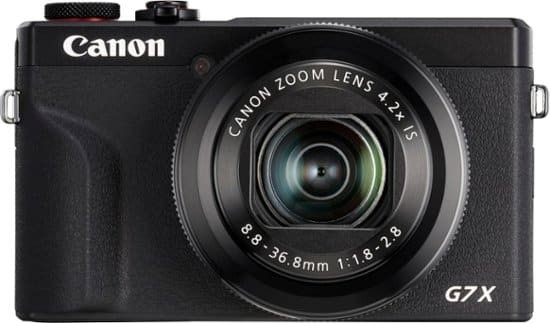 Canon G7x Mark III, recommended as the best compact point-and-shoot travel camera
Canon G7x Mark III, recommended as the best compact point-and-shoot travel camera
Buy the Canon G7x Mark III now
This post contains affiliate links. As an Amazon Associate, I earn from qualifying purchases. The opinions presented here are entirely my own.
Essential Accessories for the GX85 Already own the GX85? Explore my list of the best accessories, including GX85 cases.
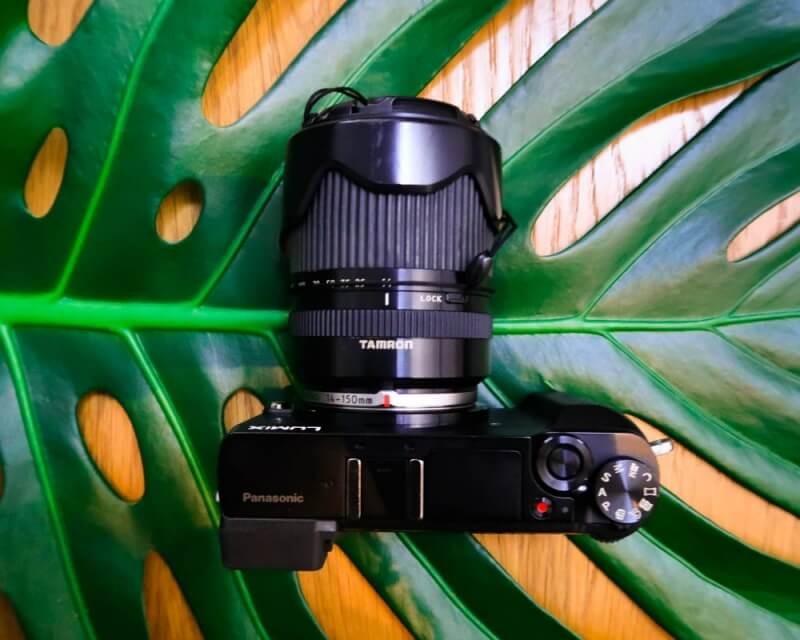 Panasonic GX85 with a larger zoom lens, transforming into a DSLR-like setup for specific travel photography needs
Panasonic GX85 with a larger zoom lens, transforming into a DSLR-like setup for specific travel photography needs